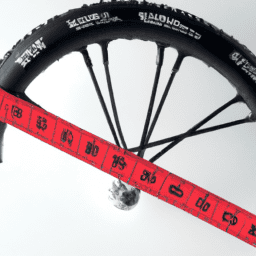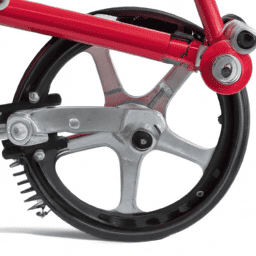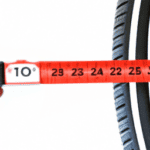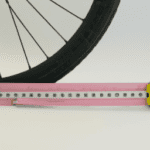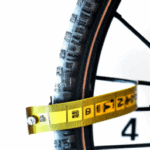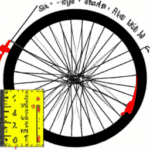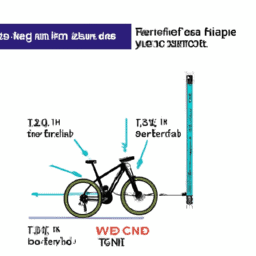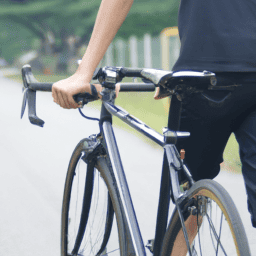Cycling is an excellent method for shedding calories while appreciating the scenic outdoors. Nonetheless, having tires that are not the right size can spoil your biking adventure. It’s crucial to understand how to size your bicycle tires before you venture out on the road.
Fortunately, measuring your bicycle tires is an easy process that does not require any special skills or tools. To begin with, understanding the different parts of your bicycle tire is crucial. A tire is made up of the bead, sidewall, tread, and the casing. Knowing these parts will help you read the markings on your tire and measure it correctly.
In this article, we will take you through the process of measuring your bicycle tire, reading the markings on your tire, choosing the right inner tubes and tires, and maintaining your bicycle tires to ensure a smooth and safe riding experience.
Key Takeaways
- Measuring bicycle tires is essential for a good cycling experience and should be done before hitting the road.
- Proper tire pressure is important for both performance and safety and can be found on the markings of the tire.
- Choosing the correct tire size is crucial for your rim diameter, load, and speed ratings and there is a table provided for tire size conversion.
- Tire maintenance is important and includes checking tire pressure, keeping tires clean, removing foreign objects, and inspecting for signs of wear and tear.
Understanding the Different Parts of a Bicycle Tire
Let’s take a closer look at the various components that make up a bike tire. Understanding the tire construction is essential in measuring your bicycle tires accurately.
A bike tire consists of three primary parts: the bead, the casing, and the tread. The bead is the part of the tire that fits onto the rim of the wheel. The casing is made of fabric layers that give the tire its shape and strength. The tread is the part of the tire that makes contact with the ground.
Knowing the tire pressure is crucial, as it can affect the performance and safety of the bike. Before measuring your tire, ensure that it’s properly inflated to the recommended pressure indicated on the sidewall of the tire.
Reading the markings on your tire can be confusing, but it’s necessary to ensure that you choose the right size of tire.
Reading the Markings on Your Tire
When you glance at the markings on your tire, you’re instantly transported to a world of numbers and letters that tell the story of your bike’s rubber soul. Understanding these markings is crucial for maintaining your bike’s performance and safety.
Here’s what you need to know when interpreting symbols and identifying sizes on your bicycle tire:
-
Interpreting Symbols:
-
The letter ‘P’ on your tire stands for ‘Passenger’ and means that the tire is suitable for use on a bicycle.
-
The number following the letter ‘P’ represents the tire’s width in millimeters, which is the distance between the two outer edges of the tire.
-
The number following the slash indicates the aspect ratio, which is the height of the tire’s sidewall as a percentage of its width.
-
Identifying Sizes:
-
The tire’s diameter is represented by the number following the aspect ratio, and it is measured in inches.
-
The load index and speed rating are additional markings that indicate the tire’s maximum load capacity and speed capability, respectively.
It’s important to choose the correct tire size that matches your bike’s rim diameter, as well as the load and speed ratings required for your riding conditions.
Now that you know how to read the markings on your tire, it’s time to measure your tire size accurately.
Measuring Your Tire Size
To accurately determine the size of your rubber soul, you’ll need to take a close look at the markings on the sidewall of your trusty steed’s wheels. Measuring accuracy is essential in finding the right inner tubes and tires. The markings on the tire will tell you the size, type, and recommended pressure for your tire.
Converting tire sizes can be confusing, so it’s important to understand the markings. The table below can help you decipher the size of your tire. Remember to measure your tire accurately so that you can have a smooth and safe ride. Now that you know how to measure your tire size, let’s move on to choosing the right inner tubes and tires.
| Tire Size | Width (mm) | Diameter (in) |
|---|---|---|
| 700 x 23c | 23 | 27 |
| 700 x 25c | 25 | 27 |
| 700 x 28c | 28 | 27.5 |
| 700 x 32c | 32 | 28 |
| 26 x 1.25 | 31.75 | 26 |
| 26 x 1.5 | 38 | 26 |
Choosing the right inner tubes and tires is crucial to ensure a safe and comfortable ride.
Choosing the Right Inner Tubes and Tires
Picking the perfect inner tubes and tires for your ride is like finding the right pair of shoes that fit comfortably and support your feet. The right tires and inner tubes can make all the difference in your cycling experience. Proper inflation is crucial for performance and safety. Before choosing your tires, make sure you know the recommended pressure range for your bike and adjust accordingly.
Tire width is another important factor to consider. The width of your tire affects your overall speed, comfort, and traction. A wider tire provides more stability and cushioning, while a narrower tire offers less resistance and is faster. The right tire width for you depends on your riding style and terrain.
Here are some other things to keep in mind when choosing your inner tubes and tires:
- Check the valve type and make sure it matches your pump.
- Look for tires with puncture-resistant features for added durability.
- Consider the tread pattern for optimal grip on different surfaces.
- Choose tires with reflective sidewalls for increased visibility in low light conditions.
- Don’t forget to factor in the weight of the tires for overall bike weight.
When it comes to maintaining your bicycle tires, there are a few things you can do to prolong their lifespan and ensure optimal performance.
Maintaining Your Bicycle Tires
Proper maintenance is key to keeping your ride smooth and safe, so it’s important to regularly check for any signs of wear or damage on your rubber wheels. Checking tire pressure is one of the most important aspects of maintaining your bicycle tires.
Underinflated tires can cause sluggishness and decrease your bike’s overall performance, while overinflated tires can lead to a bumpy ride and increase the likelihood of punctures. To prevent punctures, it’s important to keep your tires clean and free of debris.
Inspect your tires before every ride and remove any foreign objects that may have become lodged in the rubber. Additionally, consider investing in puncture-resistant tires or tire liners to further reduce the risk of flats.
By keeping your tires properly inflated and checking for signs of wear and tear, you can extend the life of your tires and enjoy a smoother, safer ride.
Frequently Asked Questions
How do I know if my tire needs to be replaced?
To determine if your bicycle tire needs replacing, check tread wear by looking for smooth spots or exposed fabric. Inspect sidewalls for cracks or bulges. These are signs of wear and may indicate the need for a new tire.
Can I mix and match different tire sizes and brands on my bike?
"Compatibility concerns and performance differences make it unwise to mix and match different tire sizes and brands on your bike. It’s like trying to fit a square peg into a round hole – it just doesn’t work." ‘It’s important to choose the right size and brand of tires for your bike based on your riding style, terrain, and preferences to ensure optimal safety, handling, and durability.’
Is it safe to inflate my tire to the maximum pressure listed on the sidewall?
Inflating your tire to the maximum pressure listed on the sidewall can have both pros and cons. Overinflating can improve speed and performance but can also make your ride less comfortable. Underinflating can increase rolling resistance and risk of flats.
What should I do if I get a flat tire while riding?
If your tire goes flat while riding, fix punctures with essential tools. Remove the tire and tube, locate the puncture, patch it, and reassemble. Carry a spare tube and pump for emergencies.
How often should I check the air pressure in my tires?
It is crucial to check your tire pressure regularly to ensure optimal bike performance and safety. Use a tire gauge or pump with a pressure gauge to measure pressure accurately. Don’t overlook the importance of tire pressure.
Conclusion
Congratulations, you now know how to measure your bicycle tires with precision! With this newfound knowledge, you can ensure that your bike is always equipped with the right size and type of tire for your needs.
Think of your bicycle tires as the shoes of your bike. Just like ill-fitting shoes can cause discomfort and problems, incorrect tire size or type can lead to a suboptimal cycling experience.
By maintaining your tires and choosing the right inner tubes and tires, you can ensure that your rides are smooth and comfortable, whether you’re commuting, touring, or racing.
So go forth, measure your bicycle tires, and enjoy the freedom and joy of cycling. Your bike and your body will thank you for it!
